Encyclopaedia Visual Art of Maharashtra Artists of the Bombay School and Art Institutions (late 18th to Early 21st Century)
The three colonial art schools of India established by the mid-19th century at Madras, Calcutta and Bombay have been pivotal in rooting the tradition of European naturalism in the country rupturing the native art practices.[1] To understand the fractures or shifts in visual arts in the pre-colonial and decolonising art of Maharashtra one was required to scour several sources. The data collection in this direction almost makes the researchers’ suffer a prison sentence due to the lack of archiving habits of the artists and the administrators of the past. The arrival of the Drushyakala Khand by Hindusthan Prakashan Sanstha (Saptahik Vivek) in 2013 produced in Marathi presented a plethora of 300 odd biographies of painters, sculptors, and applied arts professionals along with insight into two centuries of visual art from c. 1760 to c. 1960.
It is an art-historical gift to the Marathi artworld through immense efforts by editors Suhas Bahulkar and Deepak Ghare with contributions from several artist-writers. A mammoth feat accomplished of creating the encyclopaedia that ran for several years. In May 2015, the work to translate it into English began with the support of the Pundoles financially and presided over by a team of art historians and artists like Pheroza Godrej, Dr Sudhir Patwardhan, and Dilip Ranade in different capacities. The outcome is now presented to us in the form of a thick volume of about 900 pages richly packed with 321 colour plates and 1200 odd black and white illustrative images annotating the thoroughly written texts.
Titled as Encyclopaedia- Visual Art of Maharashtra: Artists of the Bombay School and Art Institutions (Late 18th to Early 21st century) the catalogue clearly states its scope and is free of jargons. The historically selected areas classified in the encyclopaedia choose to highlight a concept of Bombay School and its oeuvre and discount other possibilities. A difficult yet pertinent take by the editors to envelope an entire discourse of creative practices under one umbrella term- The Bombay School (BS). The encyclopaedia attempts an overview of regional visual arts on the lines of the chronological narrative survey of World Art, The Story of Art by Ernst Gombrich, a seminal text, and an accessible introduction to the visual arts. However, the encyclopaedia focuses on anthological entries on individual artists and some landmark institutional contributions to the field. An art enthusiast is fairly exposed to the building blocks of visual arts of Maharashtra.
One of the longest prefaces (75 pages) I have come across, covers a usual chronology of prehistoric art forms with an emphasis on the diverse records from Maharashtra. The editors contextualise the thematic of BS to be as vast as the Maratha ‘empire’, or the scale of Bombay province under the Raj till formation of the state in 1960, thus engulfing wide yet ambiguous boundaries geographically[2]. It is claimed that the BS was informally established[3] with the reputation gained after the commissions carried out by the alumna of Sir J. J. School of Art (JJ) of decorating the building facades of several iconic buildings in the fort area. The fort walls were demolished in 1862 under the Governor of Bombay Sir Bartle Frere to develop Mumbai on the lines of London. We can see the mural works executed by the JJ alumna on pillar-capitals or niches of iconic buildings like Rajabai tower, Bombay High Court, Crawford market including the building of JJ itself.
The period covered under the encyclopaedia is determined as 1760 to 1960. c. 1760 coincides with the beginning European Industrial revolution in Britain and the year 1960 with the formation of the state of Maharashtra on linguistic basis. The first wave of Industrial revolution may have little to do with the visual arts of Maharashtra of the period but sets a stage for irreversible changes both in Europe and consequentially in the colonised regions with effects visible in 19th century India.
The current English volume is composed mainly of two sections dedicated to 1. Painters and Sculptors, 2. Applied Artists. Several of the enlisted artists have different roles of writers, art-educators, critics, illustrators etc. other than being artists. Baburao Sadwelkar, Madhav Satwalekar are two examples of such mixed careers as artists and art-administrators. A third section is earmarked to institutions that have played a central role in BS viz., JJ, the two colonial art societies of The Bombay Art Society and The Art Society of India as well as Artist’s Centre. The sectioning allows the reader to easily manoeuvre through the volume with clear alphabetical marking on each page of the first two divisions to search for individual entries or arbitrary discovery too. The institutional role under BS has been richly emphasised but narrowed to the artists from or related to these four institutions discounting other cultural organisations. The crafts department of the JJ remains side-lined here. Similarly, other members of the visual art community viz. art historians, and critics too refrained from the project owing to the lengthiness of the volume.
The biographies of distinguished artists are descriptive and comprehensive with jargon-free language and have been chosen on five criteria based on the origins and contribution to the discourse of art in Maharashtra. Perhaps the biography format allows to highlight on the many meritorious artists, who otherwise have remained unknown and their work untranslated into the mainstream art historical discourse. Several enlisted names are in fact new revelations even to the artist community. The anthological literature in general attempts to capture the demography, heritage, education, nature of professional practice, contribution to the field, and aesthetic appreciation of the artists’ works with supplementary achromatic slides. Certain trivia along the biographies allow us to construct a mind-map of the contemporary exchanges ex. Raghunath Dhopeshwarkar was part of the commission of a large mural painted at the Imperial Secretariat, New Delhi; and also, amongst the selected artists to paint murals in the Metro Cinema Hall, Fort an Art Deco building in Mumbai by Metro Goldwyn Meyer[5].
However, the preface that sets the ground for the exercise of the entire volume carries in translation the typical circumlocutions common to the construct of literary Marathi. Further, the editors maintain a rhythm of sorts where a set of information keeps repeating in back-and-forth manner either as descriptive examples or as sub-titular contents probably in accordance with flow of the description that is explanatory rather than chronological. This allows us to reiterate the historical significance of such instances but fall short to create a clear perception of timelines and sequencing of events in chronology. In terms of the timeline, though the 75-page outline has well defined period breaks, a graphical timeline as a standard practice of history books would have proved a ready reckoner for the vast yet diverse history.
The section of colour plates curated by Suhas Bahulkar is a meritorious act that provides a comprehensive insight to the pictorial length of Mumbai’s art-world of the past two centuries. Collating such a loaded volume has its own compelling merits and limitations of finding apt and sufficient data through written records, oral annotations, published or unpublished material, newspaper titbits, correspondences stored away from easy notice where an archivist thrives patiently to put the puzzle together. The entire team behind the encyclopaedia has performed the act of putting the jigsaw visual art map of Maharashtra alias Bombay School together in an objective yet engaging manner unlike the academic history archives. This gargantuan record now provides scope for researchers to access the corpus to establish art historical and analytical perspective of the regions’ celebrated yet romanticised past and present it with nuances. Though the translation into English was a relatively easier task, the foundational efforts in collating data for the original Marathi volume has been altogether different, especially when it began from scratch. The translation into a globally accessible language has given an opportunity for the English speaking or non-Marathi speaking art community to explore and engage with the enlisted artists.
As the only cumulative record of the visual arts of the state, the publishers are urged to formulate a digital repository for enhanced access to all art enthusiasts and researchers. This would allow scope for an ongoing archive that can be updated and include a wider set of practices of individuals.
Get it now and save 10%
BECOME A MEMBER

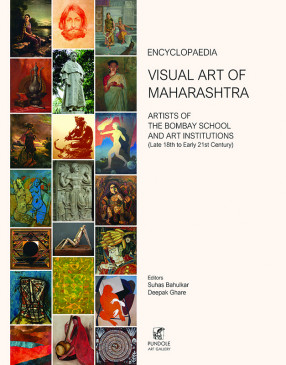
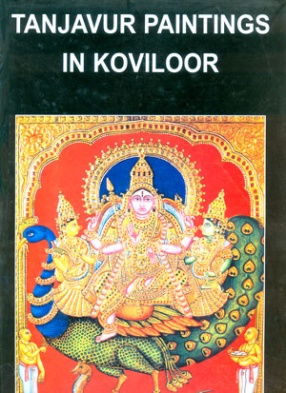
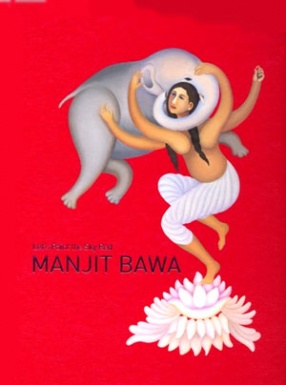
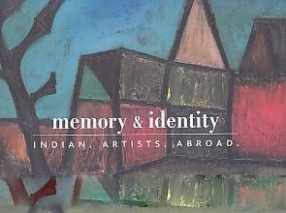
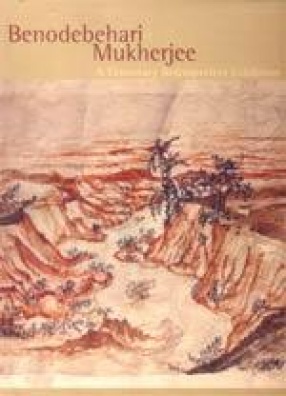

Bibliographic information
Deepak Ghare